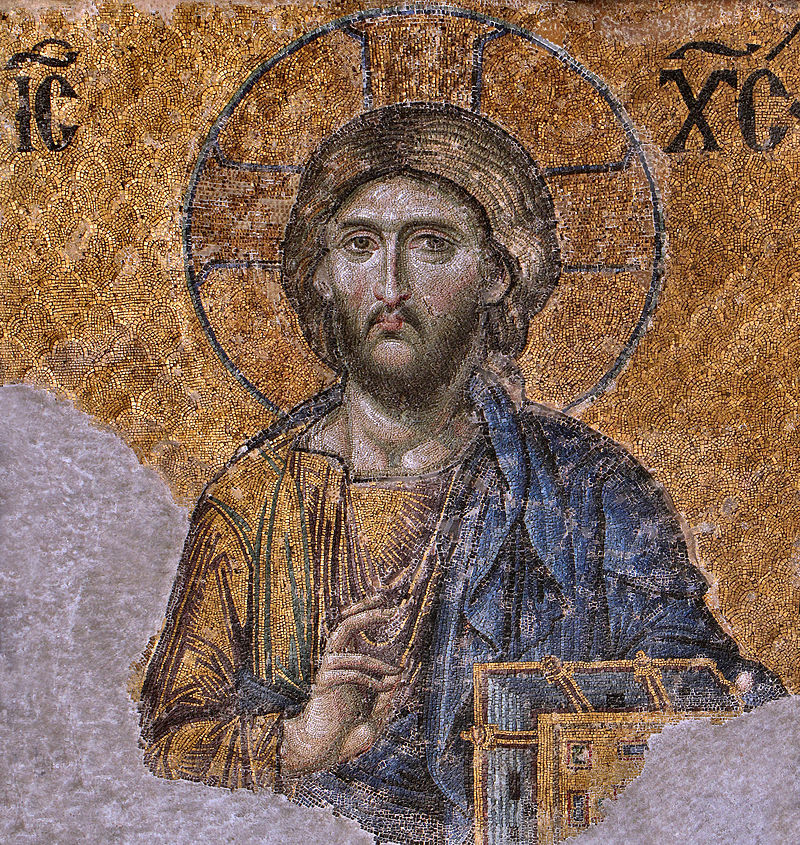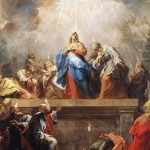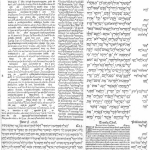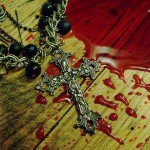
By Sr. Lorraine Trouve, FSP
The Gospel for this Sunday, the feast of Christ the King, is taken from John’s Passion narrative: Jesus before Pontius Pilate.
Jesus’ kingdom is not of this world; he is not a king in political terms. “The Passion is conceived in the fourth Gospel as a kind of epiphany of Christ the King.” *
Unlike the Synoptic Gospels, John does not talk about the kingdom of God–until the Passion narrative. Then, he presents Jesus and his kingdom for what it really is: “The kingdom is to be the earthly continuation and representation of Jesus after he has gone,” (Ibid.) that is, the kingdom on earth is the Church.
The Pierced Heart of Christ
The second reading from Revelation says: “Look, he is coming with the clouds; every eye will see him, even those who pierced him; and all peoples on earth will mourn because of him. So shall it be! Amen!” (Rev 1:7).
In reading this we can’t help but think of that other scene in John’s Gospel, when after Jesus died “one of the soldiers pierced his side with a spear, and blood and water came out” (Jn 19:34).
The prophet Zechariah had written, “I will pour out on the house of David and on the inhabitants of Jerusalem a spirit of mercy and supplication, so that when they look on him whom they have thrust through, they will mourn for him as over a firstborn. . . “On that day a fountain will be opened for the house of David and the inhabitants of Jerusalem, to purify from sin and uncleanness.” (Zech 12:10, 13:1).
This fountain is the blood and water that poured out from the heart of Christ the King as he hung on the cross. The blood and water is the fountain of sacramental life in the Church, representing all the sacraments but Baptism and the Eucharist in particular.
The kingdom that Christ came to establish, the Church, freely offers this new life of grace to all who desire it. The only condition is faith and repentance, to believe and to begin through grace to walk in the newness of life.
Since after his death and resurrection the mission of Christ on earth was accomplished, he left us the Church as the place wherein we receive his life of grace. This kingdom would be holy, despite the flaws and sins of its members. It would be a united kingdom, symbolized at Calvary by the seamless garment of Christ which in 19:23 ff, John emphasizes could not be torn apart. The biblical background here is found in 1 Kings 11:29-31. The prophet Ahijah took the garment Jeroboam was wearing and tore it into twelve pieces, symbolizing the division of his kingdom, in contrast.
The fountain of blood and water that flowed from Christ’s heart is at the center of the divine mercy devotion that Jesus gave to us through St Faustina. He promised her that through that image he would grant many graces to the world.
The Year of Mercy is going to start in a couple weeks. Today’s feast of Christ the King can help us to reflect on his great love and mercy, and to prepare for the coming time of mercy when surely the floodgates of heaven’s graces will be open for us, if we are willing to ask for them.
*Andre Feuillet, Johannine Studies (New York: Alba House, 1964, p. 21).
 Sr. Marianne Lorraine Trouvé, FSP is a Daughter of St. Paul who currently works on the editorial staff of Pauline Books and Media. She has a master’s degree in theology from the University of Dayton, with a concentration in Marian studies (The Marian Research Institute at UD). She has also edited several books on Theology of the Body, including the new translation of Pope John Paul’s talks that was done by Michael Waldstein. She is also very interested in Saint Thomas Aquinas and has been working her way through the Summa for several years now, one article at a time. Besides prayer and work, she likes to write, garden, do logic puzzles and take walks with friends. She blogs at Thomas for Today.
Sr. Marianne Lorraine Trouvé, FSP is a Daughter of St. Paul who currently works on the editorial staff of Pauline Books and Media. She has a master’s degree in theology from the University of Dayton, with a concentration in Marian studies (The Marian Research Institute at UD). She has also edited several books on Theology of the Body, including the new translation of Pope John Paul’s talks that was done by Michael Waldstein. She is also very interested in Saint Thomas Aquinas and has been working her way through the Summa for several years now, one article at a time. Besides prayer and work, she likes to write, garden, do logic puzzles and take walks with friends. She blogs at Thomas for Today.












